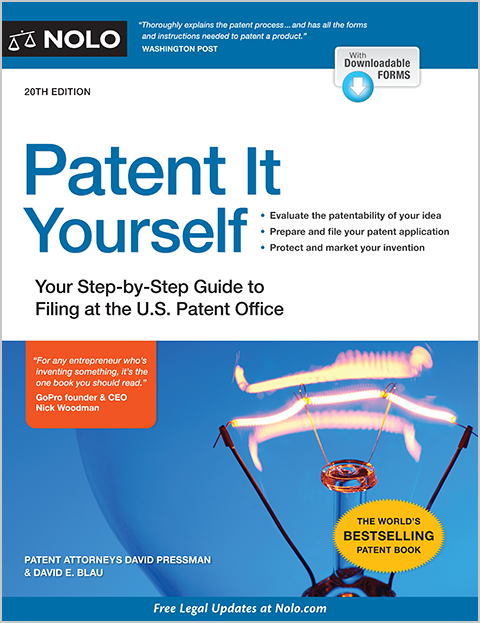Adding a layer of protection to your brand is often smart business.
Imagine that you have a trademark on the name of your business. The purpose of trademark law is to prevent consumer confusion, so as to ensure that consumers can recognize the true source of particular good or services. The trademark prevents, for example, a competing business from opening up across the street using the same name.
In the 21st century, the name of your website URL is just as important as the name on the front of your store. Fortunately, trademark protection also applies in the digital world. If another business attempts to register a domain name (that is, a Web address or URL) that is the same as your business name, you can seek relief in court to stop them.
Why Register Your Trademark?
Interestingly, you do not need a federally registered trademark to prevent a competing business from using your business name in its website address. So why bother registering it as a trademark with the U.S. Patent and Trademark Office (PTO) at all?
Federally registering your trademark makes it easier for you to enforce your rights as a trademark owner because you will automatically be presumed to own the mark. Anyone who uses it after your registration is presumed to know about it because the mark is publicly listed on the federal government's register of trademarks.
This makes it a bit easier to convince a judge that the later user is intentionally infringing on your mark. If you are able to prove the infringement was intentional, it can increase the likelihood that a court will award you money damages. The possibility of suing for enhanced damages will also make it easier to find a lawyer to take your case if someone infringes on your trademark.
Put simply, it makes sense in most cases to register your company's business name as a trademark, particularly if you intend to conduct business online or across multiple states.
What Types of Domain Names Can Be Registered?
Not all domain names can be registered as trademarks. The PTO is particular about what can be registered as a domain name.
For example, you will have a problem registering a generic name like "drugs.com" as a trademark. And you would face an uphill battle to register a domain name that you use solely as an address and not a signifier of services.
So the law firm of "Smith & Jones" would have a hard time registering "smith&jones.com" as a trademark. It would have to prove that the domain is being used for some other purpose than for people to find and contact the law firm. (Note that you can still use these domain names when you buy your website address; it's just that the domain names themselves cannot be registered with the PTO as independent trademarks.)
How to Register a Trademark in the U.S.
It is relatively easy to file your trademark application online at the PTO website. Often, you do not even need a lawyer, though it can be helpful to have a lawyer handle this paperwork.
The typical filing fee for a domain name mark is $325 per class (2018 figure) if you file electronically using the PTO's Trademark Electronic Application System (TEAS ). It can cost more, however, if you will be offering a number of different services on your website.
To complete the registration process, you have to actually be using the domain name on a website. But you can start the process if you intend to use name soon (an intent-to-use application). When you do start using the name and complete the registration process, the application date will be treated as the date you first used the mark. This will give you a priority claim over later users.
When you file an intent-to-use application and then complete the process after you begin using the domain name, you pay an additional fee ($150 in 2018). Note that the precise fees may change from year to year.
The PTO may take a year or more to process your application before issuing a formal trademark. However, once you file it, your domain name will appear as a pending trademark in the PTO database. If you file a "use" application (one based on your actual use of the name), you will probably hear from the PTO in three to six months.
If there is a problem with your chosen name, such as a conflict with someone else's trademark, you will receive a letter from your trademark examiner explaining it. In many cases, you'll be able to solve the problem with a phone call, although in more complex cases, you may need to retain a trademark lawyer to advocate on your behalf.
Within three months, you should receive a "Notice of Publication." The PTO will then publish your mark in its Official Gazette, thus allowing others to oppose your registration. Assuming there is no opposition, you will receive a Certificate of Registration or in the case of an intent-to-use mark that has not been placed in commerce, a "Notice of Allowance."
While all of this might sound like a speedy process, be aware that it can take a year or more to complete. The timing will depend partly on the complexity of your mark and whether it conflicts with another registered mark.
Later on, there will be some housekeeping needed to keep your registration in force. For example, between five and six years after registering your mark, you will need to inform to the PTO that you are still using it. You must renew your registration every ten years and between the fifth and sixth year following registration, you must file an affidavit declaring the continued use. This is known as a Section 8 declaration.
Talk to a Lawyer
Need a lawyer? Start here.
How it Works
- Briefly tell us about your case
- Provide your contact information
- Choose attorneys to contact you
- Briefly tell us about your case
- Provide your contact information
- Choose attorneys to contact you



